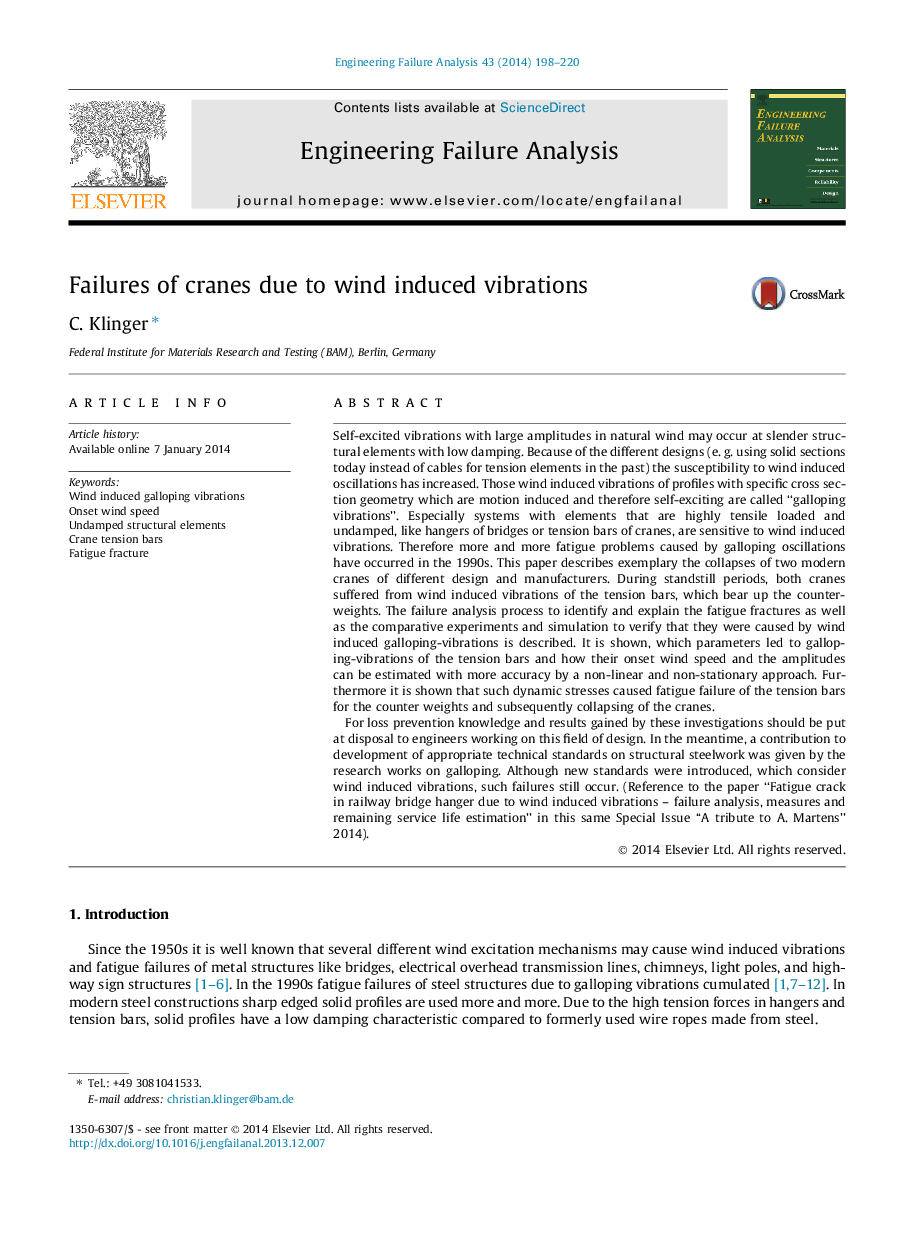| کد مقاله | کد نشریه | سال انتشار | مقاله انگلیسی | نسخه تمام متن |
|---|---|---|---|---|
| 773778 | 1462981 | 2014 | 23 صفحه PDF | دانلود رایگان |
• Different crane types suffered severe wind induced vibrations of tension bars.
• Vibrations led to fatigue fractures of tension bars followed by cranes collapses.
• Fatigue strenght estimations and comparative wind tunnel experiments were carried out.
• Onset wind speeds for galloping vibrations were identified for the tension bar profiles.
• Hints for identification and prevention of wind induced galloping vibrations are given.
Self-excited vibrations with large amplitudes in natural wind may occur at slender structural elements with low damping. Because of the different designs (e. g. using solid sections today instead of cables for tension elements in the past) the susceptibility to wind induced oscillations has increased. Those wind induced vibrations of profiles with specific cross section geometry which are motion induced and therefore self-exciting are called “galloping vibrations”. Especially systems with elements that are highly tensile loaded and undamped, like hangers of bridges or tension bars of cranes, are sensitive to wind induced vibrations. Therefore more and more fatigue problems caused by galloping oscillations have occurred in the 1990s. This paper describes exemplary the collapses of two modern cranes of different design and manufacturers. During standstill periods, both cranes suffered from wind induced vibrations of the tension bars, which bear up the counterweights. The failure analysis process to identify and explain the fatigue fractures as well as the comparative experiments and simulation to verify that they were caused by wind induced galloping-vibrations is described. It is shown, which parameters led to galloping-vibrations of the tension bars and how their onset wind speed and the amplitudes can be estimated with more accuracy by a non-linear and non-stationary approach. Furthermore it is shown that such dynamic stresses caused fatigue failure of the tension bars for the counter weights and subsequently collapsing of the cranes.For loss prevention knowledge and results gained by these investigations should be put at disposal to engineers working on this field of design. In the meantime, a contribution to development of appropriate technical standards on structural steelwork was given by the research works on galloping. Although new standards were introduced, which consider wind induced vibrations, such failures still occur. (Reference to the paper “Fatigue crack in railway bridge hanger due to wind induced vibrations – failure analysis, measures and remaining service life estimation” in this same Special Issue “A tribute to A. Martens” 2014).
Journal: Engineering Failure Analysis - Volume 43, August 2014, Pages 198–220
